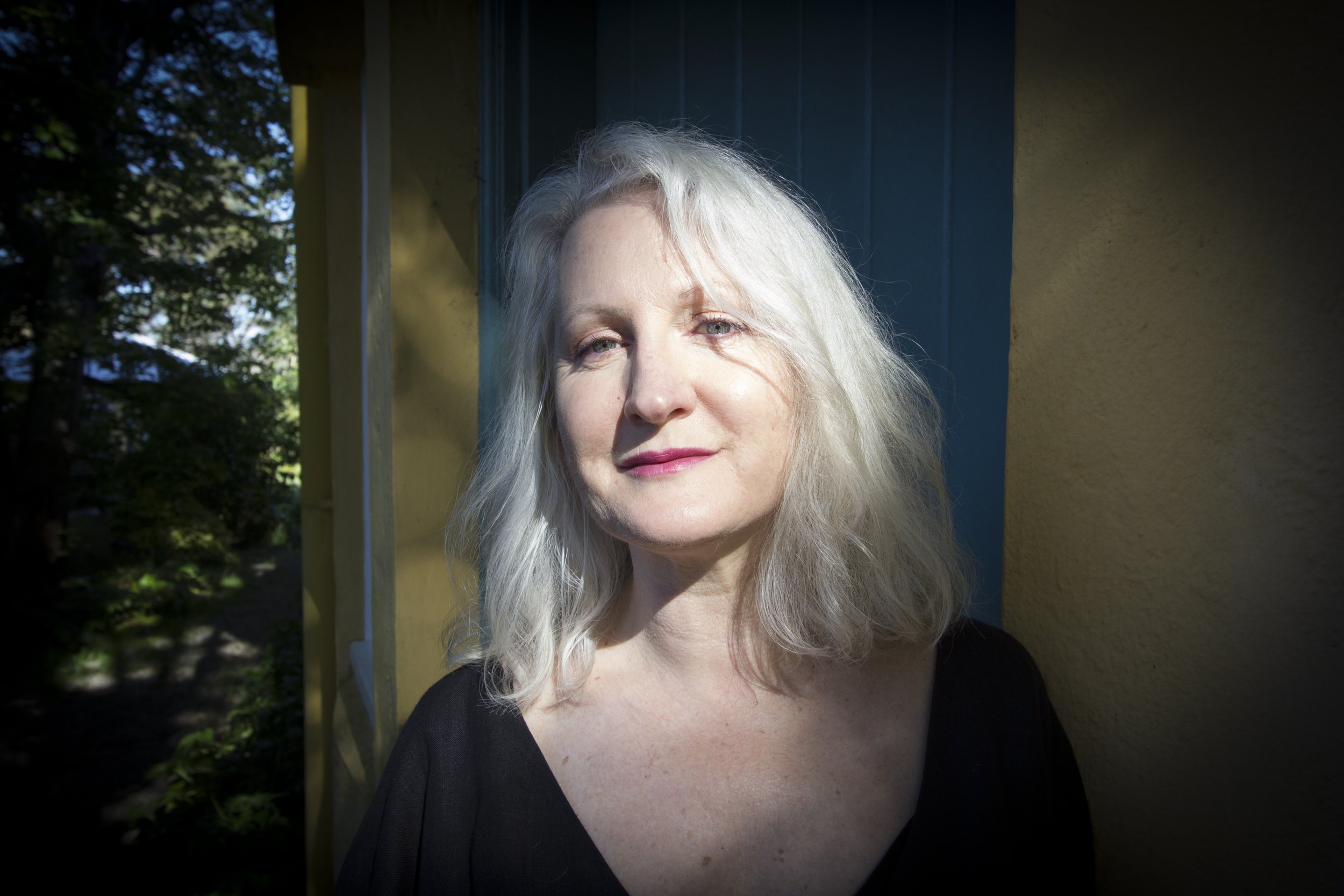
Angela O’Keeffe grew up with nine siblings on a farm in the Lockyer Valley, Queensland. She completed a Master of Arts in Writing at UTS, and her first novel, Night Blue, was shortlisted for the UTS Glenda Adams Award for New Writing and the Prime Minister’s Literary Awards. She was awarded the 2023 Varuna Eleanor Dark Fellowship.
1. Why do you tell stories?
When I am writing, the story and the reader feel like they are one. I want to speak to the reader, to sort of awaken and surprise them, and by doing so the story starts to breathe and exist. Witnessing a story come alive is such a pleasure--an honour, actually--and I think that I write simply to experience that.
2. Describe The Sitter in one (or two) sentence(s).
The Sitter is the story of Hortense Fiquet Cezanne, wife of the painter, and a contemporary writer--two women from different centuries who share a hotel room in Paris at the start of the pandemic, who interrogate their own and one another’s lives and forge new relationships with their past.
3. There is a surprising perspective in The Sitter, in that you allow the central subjectivity of the novel to be Hortense Cezanne’s. This woman, Cezanne’s wife, chief sitter and muse is also the ‘subject’ of the novel, and yet her attention is turned on the writer and the writer’s own life and circumstances. Tell us about your decision to disrupt the expected framework in this way, and make Hortense an active participant in the narrative (about her).
In the beginning I was just reaching for a sense of what Hortense might be like. There is not much known about her, apart from a few apocryphal stories, such as the one where she refused to come to her husband’s death bed because she had ‘a pressing engagement with her dressmaker.’ I decided that rather than try and refute these stories I would step into them, inhabit them, and it was then that I discovered the marvellous playfulness of her point of view, and the idea came to me that she may not be quite herself in this story, but a version of herself as filtered through the mind of the contemporary writer character. Turning her around, having her be the one to look instead of the one looked at, was an obvious extension of all that.
4. This novel seems to be as much a book about the act of writing, as it is a book about ‘the sitter’ and ‘the writer’. Was this an organic unfolding, or did you set out to write a novel about the moving parts of fiction—characterisation, setting, worldbuilding?
In my first novel I was interested in how a work of art, and a story, might come into being, and that interest has continued and evolved with The Sitter. I want to trace what is in fact untraceable—the way a story comes to life. So while I am busy getting a feel for the characters’ lives and the setting, the tone etc, I am also watching for clues about the story’s own life. For instance, when I came to write the part about Georgia’s past there were these gaps in what I could find to say about her, and rather than try and fill them I left them. I thought, what if Georgia herself experiences these gaps? What might this say about the way stories are constructed and reconstructed? If the past is contestable, then the present must be too. These were the kinds of ideas I was thinking about and playing with.
5. What was it that drew you to both Cezanne’s work and to the woman of (most of) his paintings? Did you discover anything surprising in your handling of the material?
I saw some of the Hortense portraits in Paris in 2017 and I knew straight away I wanted to write about her. I was working on Night Blue at that time so I knew I wouldn’t get to it for a while, but I began thinking about it. It wasn’t just the portraits that drew me in, but the story of Hortense and Paul’s marriage, which was terribly unhappy. I think that if the marriage had been happy I would not have been interested. Tolstoy was right, of course!
6. I love the motif of the cracked window in the hotel room in Paris. Can you comment on this resonant detail.
Thank you. That detail came very early. I had no real plan for it, but it felt right. I like to include details that I find a bit puzzling, that I can ruminate on and discover things about. I was half way through writing the book when I realised the role the crack would play in the ending.
7. Several texts, including Gaston Bachelard’s The Poetics of Space, are referenced as books the writer has with her as talisman or portal. What is your own relationship with The Poetics of Space?
I read it about 20 years ago, and then again just before I started The Sitter. But I didn’t make any conscious connection to it until I’d almost finished the first draft. One day I noticed it on my bookshelf, took it down and flipped through it and saw that I’d underlined the words, “Shade, too, can be inhabited”. And so the penny dropped and I realised I could actually include it in the text.
8. When and where do you write generally? And I wondered where you were when you wrote this novel, as it is very specifically set in March 2020 at the outset of the pandemic.
I write in my study at home in Coogee. Morning is best, I like to get a run-on and then if I have to do other things there’s a momentum there when I return to my desk. I also write notes on my phone while out for a walk or when I wake in the night. I started The Sitter before the pandemic. Believe it or not, by the start of 2020 I was trying to think of a plausible reason for the two women to be stuck in that hotel room! I’d wanted to travel to Paris during that year, but of course it wasn’t possible, then as I worked I realised there was a useful symmetry to the situation. I was writing while trapped in Australia and in the novel the writer can’t get back here.
9. What are three things that sustain you as an author, or while you’re writing?
Reading, walking, watching the world.
10. Name three books that you couldn’t live without, or that were crucial to the writing of The Sitter?
Orlando, The Castle, The Master and Margarita
bonus question:
What books are currently on your to be read pile?
I have already dipped into all three, and they are brilliant. Tresspasses by Louise Kennedy, The Flirtation of Girls by Sara M Saleh and Hilary Mantel’s A Memoir of my Former Self. The last has great lines such as “Facts are strong, but they are not stable.”


